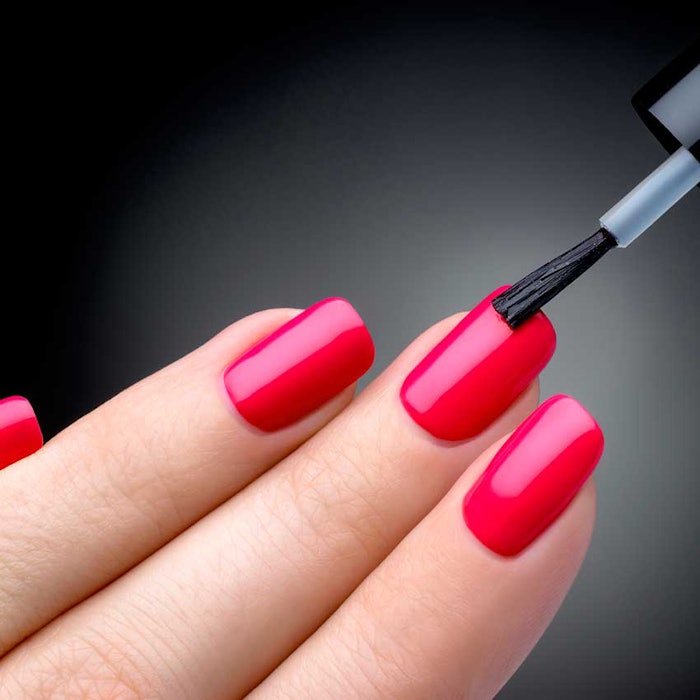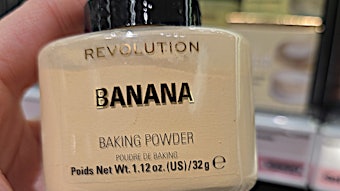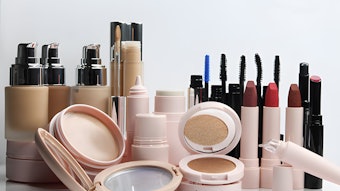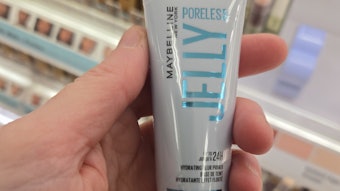
The phrase industrial cosmetic may seem like an oxymoron, however, it applies perfectly to nail polish. Nail polish differs from other cosmetics in its roles as both a decorative cosmetic and a coating to resist a variety of challenges to its integrity. While nail polish, also referred to as nail enamel or nail lacquer, is a development of the 20th century, the idea of decorating nails goes back as far as the ancient Egyptians in 1500 B.C.1 and the Chinese in 3000 B.C.2 The Egyptians used henna to color nails, with dark reds and crimson being reserved for women of the highest social order. The Chinese also decorated their nails using herbal extracts and a “lacquer” made from gum arabic, egg whites, gelatin and beeswax. Like the Egyptians, the Chinese reserved dark colors such as red and black for royalty.
Generally, methods to apply color to the nails have mimicked the available technologies for coatings at given periods of time. For instance, before the 1920s, most women pursued a polished look by massaging tinted powders and creams into their nails, then buffing them for shine. The development of automobile paint in 1920, however, provided the genesis for modern nail polish since, until then, there was no way to impart long-lasting colored film on the nails. Michelle Menard is generally credited as the first person to develop nail polish based on automobile paint. Since then, nail polish formulations have evolved to provide a platform for the variety of nail colors and effects desired by the consumer.
Before discussing how nail polish is formulated to achieve the desired performance, this article will review the variety of materials that impart color and effects in nail polish.
Nail Polish Colors and Effects
A limited number of colors were available when nail polish was first introduced. Red was the most common color until the 1930s, when Charles Revson developed a new type of nail enamel and founded Revlon. The new nail polish used pigments instead of dyes, which allowed for a wider range of nail polish colors. By the 1940s, nail polish became a staple of a women’s color cosmetics.
As time progressed, the available colors and effects for nail polish increased dramatically—from organic and inorganic pigments to metal powders, metallic pigments and effect pigments. Today, the US Food and Drug Administration (FDA) regulates those color additives that can be used in nail enamel and cosmetics in general. The list of acceptable color additives can be found in the FDA Code of Federal Regulations.
Composition
Nail polish, like any industrial coating, must meet a variety of needs. It must be easy to apply, dry quickly, wear well and remove easily. Nail polish is subject to more mechanical and chemical insults than any other cosmetic and is often exposed to both types of wear; in addition, while most color cosmetics are expected to wear for hours, nail polish is expected to wear for days.
The mechanical wear of nail polish can be caused by activities such as typing, texting, handling paper, washing dishes, etc. Meanwhile, chemical wear can occur with exposure to detergents, soap, shampoo, hand creams and lotions and sun protection products. For example, shampooing the hair exposes nails to both the chemicals in the shampoo as well as the abrasive action of washing. Therefore, nail polish must be a durable, shiny, hard, flexible film that it is resistant to cracking, chipping water and other chemical insults. This seemingly difficult task is accomplished with a balanced blend of film-former(s), plasticizers, solvents that dissolve the film formers(s), pigments (organic and inorganic, as well as effect pigments), suspending agents for the pigments and miscellaneous additives.
Pigments
Today’s personal care market hosts an endless variety of nail polish shades, as shown in Figure 1, from simple crèmes to complex shades using pigments and combinations of effect pigments. Early nail polish shades were mainly crèmes containing pigments but without metallic effects. They typically were produced in red, pink and brown shades. As time progressed and different shades of organic red as well as yellow and orange pigments became available, the variety of nail polish shades increased dramatically. Formula 1 shows a general crème nail polish formula, whereas Formula 2 shows a general frost nail polish.
The use of titanium dioxide resulted in light, soft shades, especially in the pink range and decreasing the level of titanium dioxide led to shades that were sheer and gave more of a natural finish. The logical extension of this was clear nail polish, which imparts a finished look to nails without adding color. Clear nail polishes are formulated differently in that they do not contain the suspending agents required to keep pigments from settling. Newer inorganic blue (ferric ammonium ferrocyanide) and green pigments (chromium oxides and chromium hydroxides) provide further variety especially when combined with metallic pigments.
Inorganic or organic pigments: Nail polish pigments are either inorganic or organic. Inorganic pigments are metal oxides and include titanium dioxide and iron oxides (red, black and yellow). These materials have high opacity but tend to be dull and “dirty,” meaning the color is not pure but contains a black or brown component. Organic pigments, on the other hand are bright, highly colored materials that impart clean colors on the nail.
The organic pigments used in nail polish often are lakes. Lakes are produced by precipitating water-soluble organic dyes onto inorganic substrates. This is accomplished by reacting acidic substituents on the water-soluble organic dyes with an appropriate cation in the presence of an appropriate inorganic substrate. The inorganic substrates are insoluble metal salts such as barium sulfate, calcium sulfate, aluminum hydroxide and aluminum oxide (alumina). The name of the lake gives the type of metal salt used, i.e. D&C Red No. 7 calcium lake. Examples of some commonly used organic lakes are listed in Table 1.
Pearlescent pigments: Effect and metallic pigments fall under the broader category of pearlescent pigments. While both provide visual effects, effect pigments provide a broader variety of effects due to their design to manipulate light in specific ways. The use of metallic pigments has dramatically increased the number of nail polish shades available to the consumer. Aluminum powder and bismuth oxychloride give a variety of silvery tones ranging from dark metallic to bright “foil” effects. Further, combining them with organic pigments such as the organic lakes in Table 1 can give a dramatic effect on the nails. The finish, in some cases, is reminiscent of the base coat/clear coat finish on cars.
Improvements and advances in manufacturing processes have given rise to a wide variety of effects from the same metal, such as aluminum. These effects can range from a brilliant shine to prismatic colors generated by embossing the aluminum platelets. A large majority of effect pigments are based on titanated micas, which are mica flakes coated with a thin layer of titanium dioxide. There are two broader effect pigment categories: reflectance pearls and interference pearls.
Reflectance pearls produce pearlescence through light reflection. The deposition of the titanium dioxide on the mica produces a sparkling effect. If titanium dioxide is used by itself, the resulting appearance is silvery white. Gold, copper, bronze or brown effects are achieved by adding a layer of iron oxide to the coating. Iron blue will provide a deep blue pearl effect while chromium hydroxide will produce a variety of green tones.
Interference pearls produce their effects through light refraction, as shown in Figure 2. The mica platelets are coated with a thin layer of titanium dioxide to produce a prismatic effect. Varying the film thickness produces the iridescence of different colors such as gold, orange, red, violet, blue and green.
Technological advances have led to the development of effect pigments where calcium sodium borosilicate is coated with titanium dioxide. The resulting effects, ranging from sparkling to multidimensional, vary depending on the size and thickness of the substrate, the thickness of the titanium dioxide, and additional substrate coating.
Pigments are predispersed before they are added to a nail polish formulation. It is important that the pigments be properly and completely dispersed for sufficient color development, gloss, application and smoothness. Dispersion can be accomplished using various devices such as media mills. Color chips consisting of nitrocellulose, plasticizer and pigment are prepared on a two-roll mill under a nitrogen blanket to avoid detonation of the nitrocellulose. The chips are then dissolved into a nail polish base to yield the pigment dispersion. This process provides good color dispersion, high transparency and gloss.
Primary Film-formers
As previously mentioned, modern nail enamel was introduced in the 1920s with the adaptation of automobile paints into nail colors. While nitrocellulose is no longer used to paint cars, it is the most widely used primary film-former in nail polish. Although use of this material does have drawbacks, its benefits include low cost, shine, availability, lack of hazardous monomers and low toxicity. It is made by reacting cotton or wood pulp with a mixture of nitric and sulfuric acids, as shown in Figure 3. Nitrocellulose often is supplied as a mix with 30% ethanol or isopropanol, as dry nitrocellulose is explosive when dry. This film-former is flammable and sensitive to degradation by sunlight, heat, metals—especially iron—and alkaline materials. It can also discolor as it ages or degrades, and solutions can also discolor and lose viscosity in time.
Nitrocellulose is available in a variety of grades and solution viscosities. These different grades are the result of the level of nitration, with the highest degree of nitration being used for nail polish. Viscosity is dependent upon the molecular weight of the polymer, which also affects flexibility, film strength and chemical resistance. Higher molecular weight material tends to have better film characteristics but tends to build solution viscosity faster. Usually a combination of different molecular weights is used to provide the right solids level (lower molecular weight) and good film characteristics (higher molecular weight).
Other polymers such as cellulose acetate propionate and cellulose acetate butyrate have been used in place of or in addition to nitrocellulose.3–5 These materials are used in the formulation of topcoats and clear nail polishes where the yellowing tendency of nitrocellulose would be an issue. There are also patented nail polish formulations that use non-cellulosic primary film-formers such as various copolymers of acrylic acid, methacrylic acid, acrylate esters, methacrylate esters and acrylamide.6–9
Secondary Film-formers
Nitrocellulose has a high glass transition temperature (53oC Tg),10 which means it forms brittle films. Nitrocellulose films exhibit moderate gloss and moderate adhesion to the nail. They are sensitive to water and other chemical insults. However, the adhesion, gloss, flexibility and resistance performance of these films in nail polish can be improved by adding one or more secondary film-forming polymers.
Secondary film-formers must be compatible with the nitrocellulose and other ingredients such as solvents and plasticizers. The proper ratio of secondary film-former to nitrocellulose is necessary so that the film is neither too hard nor too soft. The correct ratio will vary depending on the type of secondary film-former used. An excessive amount of secondary film-former can lead to films that dry slowly and are too soft and flexible, while insufficient amounts can lead to films that dry quickly and become hard and brittle.
The classes of secondary film-formers have changed with time. One commonly used for many years was toluenesulfonamide/formaldehyde resin (TSFR), which was first introduced in the late 1930s.11 TSFR is an oligomer that is formed by the condensation reaction of toluenesulfonamide and formaldehyde. While it is an efficacious secondary film-former for nitro- cellulose, concerns about parts-per-million residual formaldehyde has led to a decline in its use since the 1990s. Since the safety of TSFR has been questioned, other classes of compounds have been evaluated as substitutes for TSFR. These include toluenesulfonamide/epoxy resin (TSER),12–13 polyester resins,14–15 acrylate/methacrylate copolymers and polyvinylbutyral.16
Plasticizers
Since the glass transition temperature of nitrocellulose is 53oC, which is not flexible at RT, a plasticizer must be added to the nitrocellulose to reduce its Tg and create a flexible film. The ratio of plasticizer to film-former is important; an excessive amount of plasticizer will result in a film that is too soft and flexible and dries too slowly, while an insufficient amount will result in a film that is hard and brittle and dries quickly.
Many different types of plasticizers may be used in nail enamel formulations, including: esters such ascitrates, benzoates (mono, di and tri)17 and alkyl diesters of carboxylic acids;18 N-substituted toluenesulfonamides;14 and carbonates such as glycerol carbonate.19 Dibutyl phthalate for many years was the plasticizer of choice due to its effect on nitrocellulose, miscibility with nail polish formulations and low cost. However, since the 1990s, concerns about the toxicological effects of phthalates in general have led to a decrease in the use of dibutyl phthalate and an increase in the use of other types of plasticizers.17
Solvents
Solvents are necessary to dissolve all the soluble components of nail polish such as the film-formers, plasticizers and other additives. Solvents help to regulate product viscosity, application, flow, leveling, drying time, hardness, gloss and stability. The most commonly used solvents are ethyl acetate, n-propyl acetate and n-butyl acetate. Ethyl acetate, with a boiling point of 77°C, is considered a fast-drying solvent while n-butyl acetate, with a boiling point of 126°C, is considered a medium-drying solvent. Small amounts of higher boiling esters are sometimes used as a “tail solvent” to ensure proper film formation. A blend of solvents is typically used to balance dry time with film formation. If the polish dries too quickly, it may not apply evenly and the film may not have a chance to properly form. If the polish dries too slowly, the film may be too soft for an extended amount of time, which can lead to smudging and sheet marks if applied before sleep. Quick-dry nail polishes contain higher amounts of the fast-drying solvents and tend to wear faster than polishes that contain higher levels of the medium-drying solvents. There has been speculation that low levels of the higher boiling solvents are retained in the nail polish film and keep the film more flexible to provide longer wear.
Small amounts of other volatile materials such as ethanol, isopropanol or n-butanol are added to improve the solvency of the primary solvents. They function by forming hydrogen bonds with polar materials in the formulation and remain in films longer than would be expected based on their boiling points. Isopropanol often is used because it does not have stringent regulatory issues. Nitrocellulose is supplied wet with 30% isopropanol.
Diluents are volatile materials added to a formulation to reduce its cost. Diluents do not dissolve any of the nitrocellulose, secondary film-formers, plasticizers or other additives but they are considered part of the solvent system because they are volatile liquids like the majority of the active solvents. Two examples of diluents are n-heptane and toluene. N-heptane is still utilized while the use of toluene has dramatically decreased since the early 1990s, when the California Air Resources Board imposed restrictions on its use. Further concerns about health issues also played a role in the removal of toluene from nail polish formulations.20
Suspension Agents
Suspension agents are added to pigmented nail polish to keep pigments and other colorants from settling to the bottom of the container. This keeps the product homogeneous and aesthetically pleasing to the consumer. Suspension agents are expected to function during the lifetime of the product, from manufacture to consumption, and to do so under challenging, ambient conditions. Popular suspension agents include organically modified montmorillonite clays, such as quaternized hectorites and bentonites.
Stearalkonium hectorite and stearalkonium bentonite are common in pigmented nail polish. Stearalkonium chloride is the quaternary ammonium compound used to treat the surface of the clays, and the organoclays impart thixotropy to the nail polish. As is generally known, thixotropy, as depicted in Figure 4, is a rheological behavior that exhibits high internal structure/viscosity when undisturbed, but exhibits lower viscosity when exposed to high shear (shaking or brushing), which allows for mixing and easy application. The phenomenon is also referred to as shear thinning. The high internal structure/viscosity is what keeps the pigments suspended when undisturbed.
Organoclays are typically incorporated into nail polish in the form of suspension bases, also referred to as pre-gels, which are dispersions of the organoclay in nitrocellulose, sovent(s), activators and, optionally, resin(s) and/or plasticizers. Activators are usually polar organic solvents (lower alcohols and ketones, propylene carbonate, etc.), which are added before dispersion to maximize gel strength. Sometimes a small amount of water is added as well. The addition of these materials into the mixture of clay and resin solution helps the gels to swell. The suspension bases are produced using high shear dispersion under carefully controlled conditions. A general formula for a suspension base is shown in Formula 3.
Formulation
Colored nail polishes are formulated from suspension bases, additional solvent(s) to reduce the viscosity, pigment dispersions, pearlescent pigments (if required by the shade), additives to improve brushing, and other materials added to provide certain benefits. Additional materials have included powdered polytetrafluoroethylene, powdered diamond, vitamins, calcium salts, panthenol, biotin and other materials, and are usually added in small amounts as evidenced by their position in the ingredient labeling.
As noted, clear nail polishes and topcoats are formulated without suspension bases and pigments. They usually are comprised of higher levels of nitro-cellulose, other film-forming resins and plasticizers, and are are expected to perform like a pigmented nail polish. Topcoats are applied over the initial pigmented coats of nail polish and are expected to apply easily, dry quickly and form hard, glossy films. Additional resins are often added to improve gloss. Non-nitrocellulose polymers such as cellulose acetate and cellulose acetate propionate are often used due to their non-yellowing properties.
The most common issue encountered when formulating nail polish is that the shade does not match the standard. This requires formulators to have a good “color eye” so they can see what the differences are and adjust the shade accordingly. Further, if the viscosity of the formulation is too high or too low, the batch can be adjusted with additional solvent, when too high, or additional suspension base or nitro-cellulose solution, when too low.
Conclusion
Nail polish, as has been shown, is truly industrial in its composition and formulation, which allow for the myriad of colors and effects available to the consumer. As nail polish formulating moves forward, the most likely changes will be in new pearlescent effect pigments, which are not regulated by the FDA. There may also be efforts to introduce new film-forming resins and plasticizers into nail polish formulations, although it is unlikely that nitrocellulose will be replaced as the primary film-forming resin due to its cost, availability and renewable sources (cotton and wood). Additional regulations may also come along that limit other ingredients used in nail polish.
As noted, the industry has seen a movement away from toluene, dibutyl phthalate and toluenesulfonamide/formaldehyde resin, and additional materials such as plasticizers may come under environmental or toxicological review. Finally, there may be efforts to further reduce the amount of volatile organic compounds (VOCs) in nail polishes, although this remains to be seen. In spite of these concerns, the industry can look forward to the nail polish category as having a “colorful” future.
References
1. MF Small, Mummy reveals Egyptian queen was fat, balding and bearded, www.livescience.com/7336-mummy-reveals-egyptian-queen-fat-balding-bearded.html (Accessed Mar 22, 2011)
2. M Bellis, Beauty related inventions, https://www.thoughtco.com/history-of-lipstick-1992082 (Accessed Mar 22, 2011)
3. J Peirano, Other film formers for nail enamels, Amer Perf Cosm 84, 35–36 (Aug 1969)
4. US Pat 5,747,019, Nail polish top coat free of toluene, MJ Weisman, assigned to CS Martens (Apr 3, 1997)
5. US Pat 5,720,804, Top nail coat composition, FL Marten, assigned to Almell Ltd. (Nov 30, 1995)
6. US Pat 4,126,675, Nail lacquer compositions, J Boulogne and C Papantoniou, assigned to L’Oréal (May 9, 1977)
7. US Patent 4,384,058, G Galante, assigned to Avon Products (Mar 23, 1981)
8. US Patent 4,747,419, Nail polish compositions and means for applying same, MD Flynn and AJ Suares, assigned to Cheesebrough-Ponds, USA Co. (Jun 17, 1986)
9. US Patent 5,772,988, Nail enamel compositions from acetoacetoxy methacrylate copolymer, FC Pagano, AA Patil, RW Sandewicz, WL Anton and HJ Spinelli, Assigned to Revlon Consumer Products Corp. (May 10, 1996)
10. RL Miller, Polymer Handbook, 3rd ed, Wiley-Interscience, New York (1989) pp VI/258
11. AA Patil and RW Sandewicz, Society of Cosmetic Chemists, Monograph No. 6, Nail lacquer technology
12. US Patent 4,996,284, Novel epoxy sulfonamide-based resins, a process for their preparation and use of same, LX Mallavarapu (Apr 24, 1991)
13. US Patent 5,001,175, Epoxy-sulfonamide compounds and compositions, SB Skora, assigned to Estron Chemical (Mar 19, 1991)
14. US Patent 5,326,796, Use of an arylsulphonyl- urethane as film forming resin in nitrocellulose nail varnishes, new arylsulphonylurethanes and new nitrocellulose nail varnishes, M LeCacheur, E Wimmer and V Mutterer, assigned to Societe Nationale des Poudres et Explosifs (May 4, 1993)
15. US Patent 4,301,046, Universal nail polish using polyester resin, ML Schlossman, assigned to Tevco Inc. (Jan 10, 1980)
16. US Patent 5,290,543, Long wearing nail enamel topcoat and related methods, H Ounanian, J Disomma, D Coleman, RW Sandewicz, A Castrogiovanni, assigned to Revlon Consumer Products Corp (Sep 17, 1992)
17. US Patent 5,225,185, Nail enamels containing glyceryl, glycol or citrate esters, A Castrogiovanni, RW Sandewicz, SW Amato, assigned to Revlon Consumer Products Corp (Apr 27, 1992)
18. US Patent 5,792,447 Nail enamel composition RL Socci and A Ismailer, assigned to Kirker Enterprises (Nov 15, 1996)
19. US Patent Application 20100158835, Plasticizer of Natural origin for Nail Polish, M Bandres, A Deswartvaegher, P De Caro, J-P Sennet and ST Roux, assigned to Durlin France (Jun 24, 2010)
20. C Drahl, What’s that stuff? Nail enamel, Chemical & Engineering News 86 32 42 (Aug 11, 2008)










